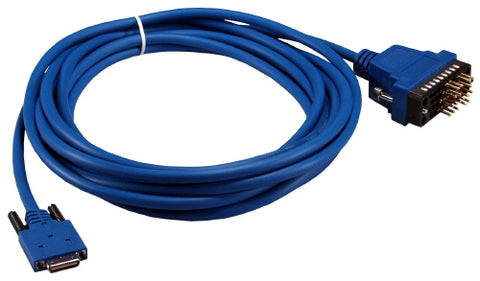
Cost is high and pricing is based on bandwidth – the more bandwidth, the more expensive. We know what the disadvantages of these were and are. The underlying network is based on T-carrier or E-carrier technologies and the typical components were a DTE and a DCE in the form of CSU/DSU. These were dedicated point-to-point services even though they would use multiplexing technologies within the service provider network, but still point-to-point and dedicated private networks nonetheless.
CISCO SERIAL CONNECTOR TYPES SERIAL
Other options that would eventually use a serial interface were lease lines using TDM (Time Division Multiplexing) technology. Jumping to 56 Kb/s through digital connections was a big boom.Įven though PSTN is still low cost, highly available and relatively simple to configure and maintain, the low data rates provided by PSTN probably make it a non-option for the broadband requirements and high speed connectivity of today’s networks. PSTN was also used as a data transport network back in the day when the upper limit of around 33 Kb/s was actually considered good. The most common type of circuit switch to WAN is the PSTN, also referred to as the plain old telephone service or POTS, typically used for voice transport. The different options would use different encapsulation methods and so you could use PPP encapsulation on top of an ISDN transport or HDLC and/or PPP in asynchronous serial options. Under those options, a dedicated path was established and maintained and in fact terminated through a carrier network for each communication session. Later options like ISDN would not only represent backup dial-on-demand type connectivity but also the main connectivity for central offices. Back in the day of asynchronous serial interfaces with low bandwidth, those were the options of choice for wide area connectivity. Circuit SwitchingĬircuit switching options used to rule the world of wide area networks. The lesson ends with a brief description of other layer 2 options like frame relay and ATM. However, on synchronous serial interfaces, the bandwidth defaults to 1,554Kbps and this is not related with the clock rate set.We will explain some examples like the public switched telephone network and common connectivity options like point-to-point connections, leased lines, and various encapsulation methods for that type of connectivity. This is used by certain routing protocols, such as IGRP, OSPF, and EIGRP, when making routing decisions.įor LAN-based interfaces, the speed of the interface becomes the bandwidth value (In kilobits per second (Kbps)). Router(config)# interface s0/1Īll interfaces have a bandwidth value assigned to them. You can find the possible values by using help. With the exception of the following standard values not subject to rounding,ġ200 2400 4800 9600 14400 19200 28800 38400Īccepted clockrates will be bestfitted (rounded) to the nearest valueĢ46-8064000 DCE clock rate (bits per second) The output for above command is shown below.Įnter configuration commands, one per line. To find the possible clock rate values, get the command help by using a question mark after the "clock rate" from the serial interface configuration mode, as shown below. This can be done by using the "clock rate" command, from the interface configuration mode. Since clocking is required to enable the interface, one of the two routers should function as DCE and should provide clocking. If is not marked, we can use the Cisco IOS show command "show controller" command to determine the interface is DTE or DCE. The picture below shows back to back cable. The cable decides which end to be DCE or DTE and it is usually marked on the cable.

However, in some cases we might connect two routers back-to-back using the routers’ serial interfaces (Example: Inside the router labs). The router is the DTE (Data Terminal Equipment) and the external device is the DCE (Data Communications Equipment), where the DCE provides the clocking. A CSU/DSU (Channel Service Unit/Data Service Unit) is a digital-interface device used to connect a router to a digital circuit. When connecting a serial cable to the serial interface of the router, clocking is provided by an external device, such as a CSU/DSU device.


 0 kommentar(er)
0 kommentar(er)
